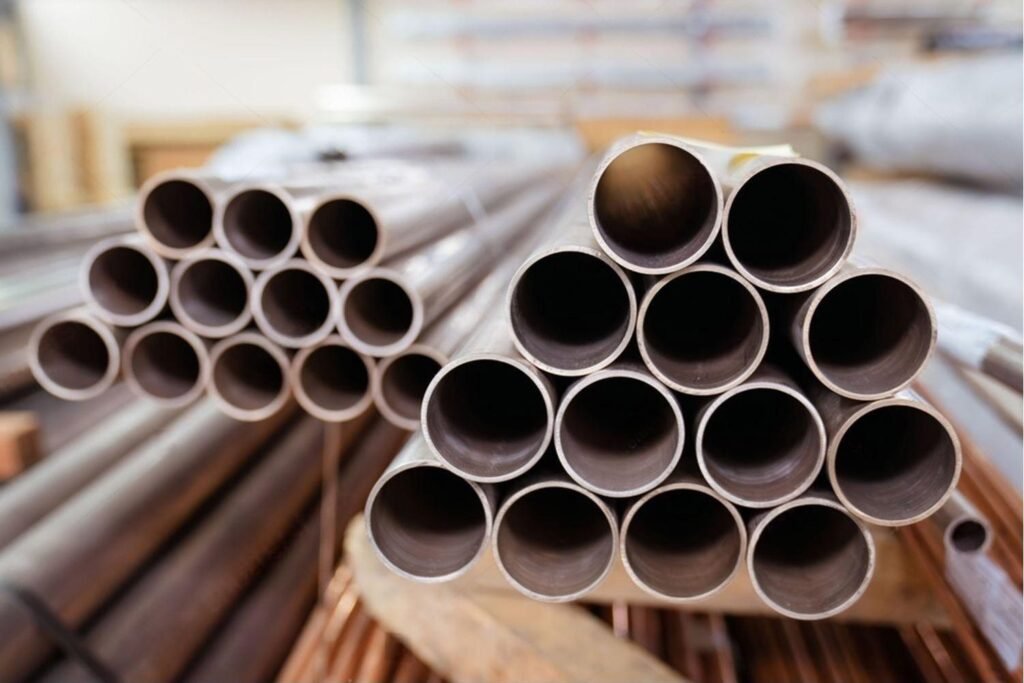Steel pipes are crucial components in a wide range of industries, offering strength, durability, and versatility. Among the most widely used materials for steel pipes is A53 steel, valued for its reliability and adaptability. This blog aims to provide an in-depth exploration of A53 steel pipes, covering their composition, properties, advantages, disadvantages, and common applications. By the end, you’ll gain a thorough understanding of why A53 steel pipes remain a go-to choice for many industries worldwide.
Introduction to A53 Steel Pipes
A53 steel pipes, also known as ASTM A53 pipes, are seamless or welded pipes made from carbon steel. They adhere to the A53 standard set forth by the American Society for Testing and Materials (ASTM), which defines the mechanical and chemical properties and dimensions of the material. These pipes are designed for use in structural, mechanical, and pressure applications and form a backbone for pipeline systems and infrastructure.

The history of A53 steel pipes dates back to the early industrial period, where engineers and manufacturers sought a durable and standardized material for transporting fluids and gases. Today, they are available in both Type S (seamless) and Type E (electric-resistance welded) pipes. They are classified further into Grade A and Grade B, with the latter offering higher strength and being more widely used.
Common uses for A53 steel pipes include transporting natural gas, oil, and water, as well as serving structural and mechanical roles in buildings, bridges, and industrial setups.
Chemical Composition of A53 Steel
The performance of A53 steel pipes largely depends on their chemical composition. The material is engineered to provide a balance between strength, malleability, and resistance under varying conditions. Below is an analysis of key elements that make up A53 steel:
- Carbon (C): Typically around 0.25%, carbon plays a critical role in providing strength and hardness to A53 steel. However, higher carbon content can reduce ductility.
- Manganese (Mn): Present in concentrations of up to 0.95%, manganese enhances tensile strength and toughness while improving machinability.
- Phosphorus (P): Kept below 0.05%, phosphorus is strictly controlled as excessive quantities can make steel brittle.
- Sulfur (S): Also maintained at values below 0.045%, sulfur improves machinability but compromises ductility when present in excess.
- Copper (Cu): Sometimes included in small amounts (up to 0.40%) to improve corrosion resistance, especially when exposed to environmental factors.
This carefully balanced chemical composition ensures that A53 steel pipes meet the requirements for both demanding high-pressure environments and moderate structural applications.
Mechanical Properties of A53 Steel
A53 steel offers impressive mechanical properties that make it suitable for various applications. Whether in Grade A or Grade B, these pipes exhibit excellent tensile and yield strengths while maintaining flexibility and durability.
Here’s an outline of key mechanical properties:
- Tensile Strength: Grade A pipes have a minimum tensile strength of 330 MPa (48,000 psi), while Grade B pipes are stronger, with a minimum of 415 MPa (60,000 psi).
- Yield Strength: Grade A pipes boast a minimum yield strength of 205 MPa (30,000 psi), while Grade B pipes provide at least 240 MPa (35,000 psi).
- Elongation: With an elongation percentage often exceeding 20%, A53 steel is ductile enough to handle high stresses without cracking or breaking.
- Hardness: A53 pipes are moderately hard, ensuring durability during transportation and installation without being too brittle.
These properties collectively ensure that A53 steel pipes perform well under pressure, temperature fluctuations, and mechanical loads.
Advantages of A53 Steel Pipes
A53 steel pipes are among the most versatile materials in the market. Below are some key advantages that contribute to their widespread use:
1. Durability
A53 pipes are built to endure harsh conditions, from high-pressure systems to structural loads. Their strength ensures long-term performance in tasks requiring toughness and resilience.
2. Pressure and Temperature Resistance
Capable of withstanding significant pressure and temperature variations, A53 pipes are suitable for both high-pressure industrial systems and moderate-temperature applications.
3. Versatility
Whether used in oil pipelines, water transportation, or structural projects, A53 steel pipes adapt to multiple applications. This makes them favorable for engineers seeking a reliable material with wide-ranging uses.
4. Cost-Effectiveness
Compared to materials like stainless steel, A53 carbon steel pipes come at a fraction of the cost while delivering excellent performance. This affordability makes them ideal for large-scale projects.
5. Availability
Manufactured by numerous producers worldwide, A53 pipes are readily available, ensuring consistent supply chains and reducing project delays.
Disadvantages of A53 Steel Pipes
Although A53 steel pipes come with numerous advantages, they are not without limitations. Understanding these drawbacks can help in selecting the right material for specific scenarios.
1. Potential for Corrosion
Since A53 steel pipes are primarily made from carbon steel, they are more prone to rust and corrosion compared to stainless steel or alloy materials. Protective coatings or galvanization are often required in corrosive environments.
2. Weight Considerations
Carbon steel pipes are heavier than comparable alternatives like plastic or aluminum. This can make handling, transport, and installation more challenging, especially for larger pipe sizes.
3. Limited Suitability for Extreme Conditions
While A53 pipes perform well under moderate pressure and temperature, they may not be ideal for extreme conditions, such as very high temperatures or environments requiring chemical resistance.
Despite these drawbacks, A53 steel pipes remain a dependable choice for numerous standard applications.
Application Scenarios of A53 Steel Pipes
A53 steel pipes are incredibly versatile and find use across a wide range of industries. Below are some of their typical applications:
1. Construction Industry
A53 pipes are frequently used in structural applications, such as scaffolding, beams, and columns. Their strength and availability make them ideal for supporting loads in buildings and bridges.
2. Oil and Gas Industry
Pipeline systems for transporting oil, natural gas, and other hydrocarbons rely heavily on A53 steel pipes. They can handle both pressure and volume, making them indispensable in the energy sector.
3. Water Transport Systems
A53 pipes are commonly employed for transporting water in municipal systems, irrigation projects, and industrial facilities. Coatings are often added to enhance corrosion resistance.
4. HVAC Systems
Heating, Ventilation, and Air Conditioning (HVAC) systems leverage A53 pipes for ductwork and fluid distribution. Their ability to withstand moderate temperatures and stresses makes them well-suited for this purpose.
5. General Industrial Applications
From machinery manufacturing to support structures in factories, A53 steel pipes play a significant role in industrial setups. Their adaptability allows them to meet varying demands in engineering processes.
Conclusion
A53 steel pipes are an essential resource in the industrial and construction worlds, offering a blend of strength, versatility, and affordability. With balanced chemical and mechanical properties, these pipes seamlessly cater to a wide array of applications, from high-pressure oil pipelines to low-stress structural components.
However, they also come with limitations such as susceptibility to corrosion and significant weight, which must be addressed through protective measures and thoughtful material selection. Despite these challenges, their benefits far outweigh the drawbacks in most scenarios.
Looking forward, the demand for durable and cost-effective materials like A53 steel pipes is expected to grow as industries seek sustainable, high-performance solutions. Whether you’re designing a water transport system, installing an HVAC unit, or constructing a high-rise building, A53 steel pipes are likely to remain a reliable choice for years to come.
#JSFITTINGS #RAYOUNG #STEELPIPE #FLANGE #STEELPIPE #MADEINCHINA #MANUFFACTURER #FACTORY #PIPEELBOW #PIPE REDUCER #INDUSTRYFLANGE
Email: admin@jsfittings.com
Whats App: 008618003119682


